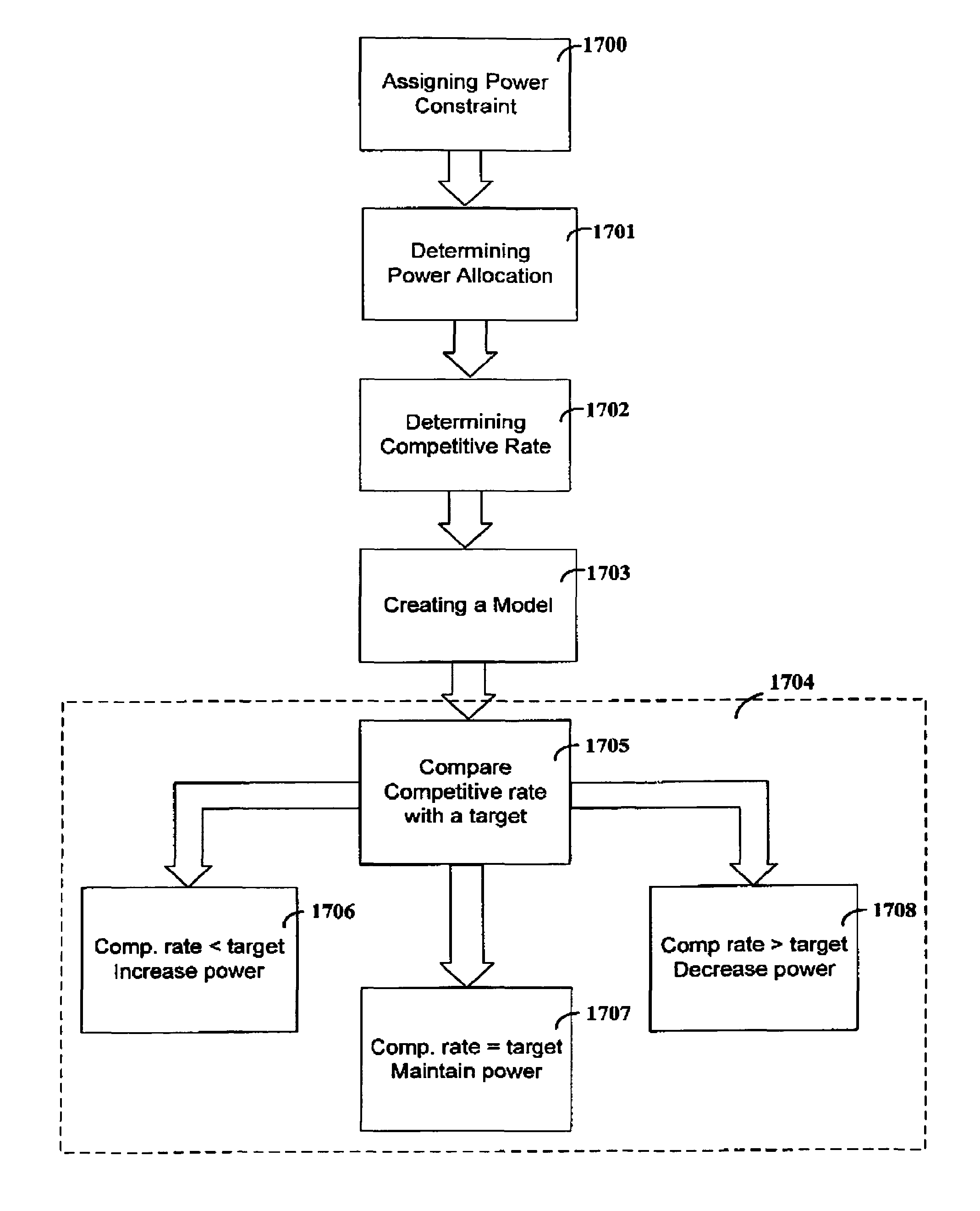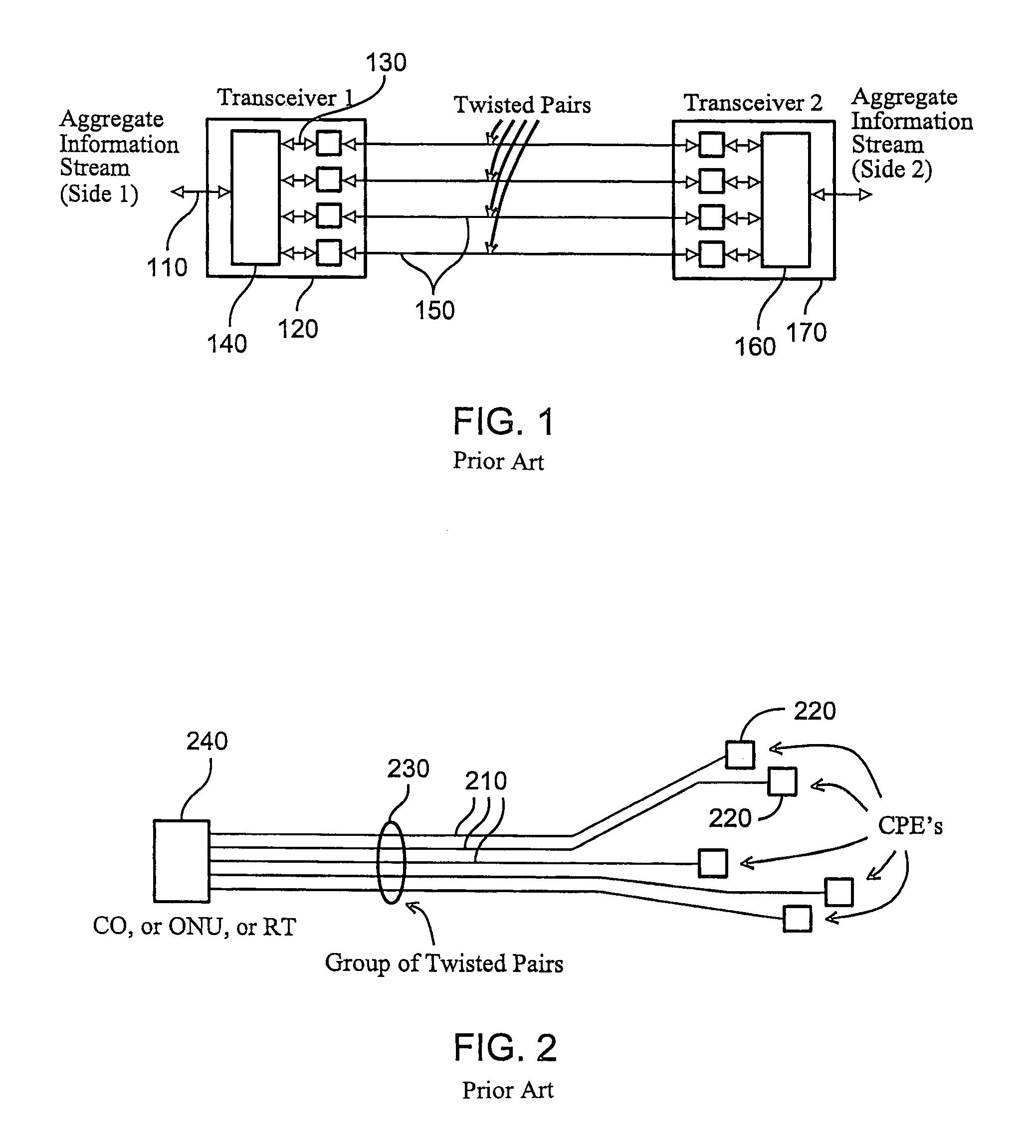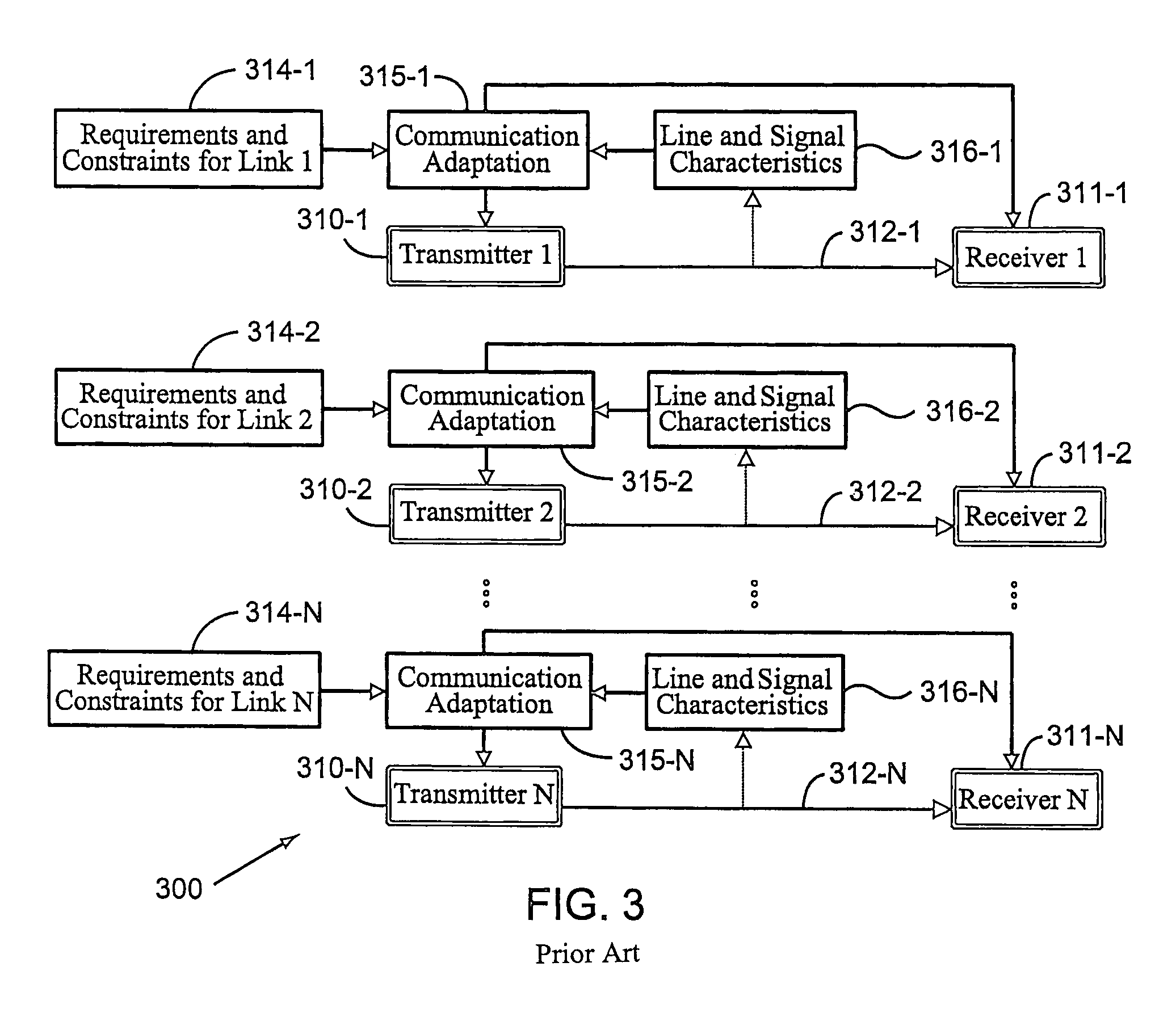Dynamic digital communication system control
a digital communication system and dynamic control technology, applied in the direction of transmission monitoring, amplitude demodulation, line-fault/interference reduction, etc., can solve the problems of complex spectrum management, inability to achieve the desired level of compromise, and inability to achieve fixed spectrum assignment. achieve the effect of improving performance and improving the provision of services
- Summary
- Abstract
- Description
- Claims
- Application Information
AI Technical Summary
Benefits of technology
Problems solved by technology
Method used
Image
Examples
Embodiment Construction
[0060]The following detailed description of the invention will be with reference to one or more embodiments of the invention, but is not limited to such embodiments. The detailed description is intended only to be illustrative. Those skilled in the art will readily appreciate that the detailed description given herein with respect to the Figures is provided for explanatory purposes as the invention extends beyond these limited embodiments. For example, the present invention is described in some instances in connection with a DSL system. However, the present invention can be used with other systems that would benefit from the improved performance afforded by the present invention. Consequently, the present invention is not limited solely to DSL systems. Moreover, the present invention is described herein primarily in connection with the reduction of crosstalk interference. Again, however, the present invention may be used to reduce or eliminate other undesirable signal interference o...
PUM
 Login to View More
Login to View More Abstract
Description
Claims
Application Information
 Login to View More
Login to View More - R&D
- Intellectual Property
- Life Sciences
- Materials
- Tech Scout
- Unparalleled Data Quality
- Higher Quality Content
- 60% Fewer Hallucinations
Browse by: Latest US Patents, China's latest patents, Technical Efficacy Thesaurus, Application Domain, Technology Topic, Popular Technical Reports.
© 2025 PatSnap. All rights reserved.Legal|Privacy policy|Modern Slavery Act Transparency Statement|Sitemap|About US| Contact US: help@patsnap.com



